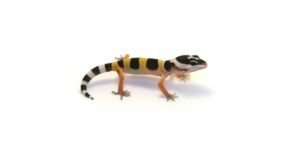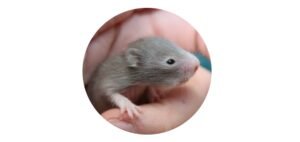Baby Pigeons: All You Need To Know
Table of Contents
Baby Pigeons
These birds can be found almost anywhere and everywhere. The rock doves or feral pigeons can be seen in abundance in cities and towns, while in urban areas and countryside wood pigeons are more common.
There is less information currently available about their babies. This article will provide the necessary information on their babies.
What does a baby pigeon look like?
Darkish or pink skin can be observed on newly hatched pigeons or baby pigeons, their patchy minimal covering of yellow or white will later form feathers.
baby pigeons’s wings, beak, and feet are initially larger in proportion than the rest of the body but they will eventually grow into these features. Their beak is generally pink or maybe even be a darker shade, while the feet are slate grey.

Baby pigeons require parental care as they are born undeveloped or are altricial and are completely dependent on their parents for survival. These hatchlings are born with closed eyes and they open them when they are 4-5 days old.
Baby pigeons usually open their bills, lift their heads and lay prone weekly. The babies of pigeons are hard to observe as pigeons nest in secluded high sites.
So you can see hatchlings if you stumble upon their nest or you domestically breed them. Baby pigeons are usually observed in their juvenile stage in which they resemble the adult.
Why don't you see baby pigeons?
As the hatchlings or baby pigeons spend a lot of their time in the nest approximately about 30 days that is a longer period compared with the other birds, due to which they are hard to spot. Their plumage resembles adult birds on fledging.
Due to their similarities, it might be tough to distinguish between them but not impossible. The site of their nesting is also one reason that their babies are not often seen. They often built their nests in places like under bridges, churches, churches, and in case of cities and towns in abandoned buildings.
It is difficult to spot their nests in such sites and hence their babies are rarely observed. These nesting tendencies may be instinctive as they are descendants from rock doves who generally nest in high places like the edges of cliffs and set back their faces to avoid predators.
What does a juvenile pigeon look like?
Fledgling and juvenile pigeons may resemble the adult due to their plumage that makes it difficult to identify their stage. The hatchling spends a lot of time in their nest and when they fledge they have already grown their adult plumage.
There are subtle differences in juveniles and adults that may vary from species to species. In general, the cere that is the white growth seen above their beaks is pinkish grey in fledglings and juveniles, while in the case of adults it is white.
They also lack the shimmering green and purple around the neck region. In the case of 8 month old or less age juvenile pigeons have greyish brown or medium-brown eyes while in the case of adults they have reddish-orange, orange or yellow eyes.
In juveniles, the feathers around the eye region also appear darker. Employing the above tips it can be easy to differentiate the adult and juvenile stages.
What is a baby pigeon called?
Baby pigeons are commonly referred to as squabs. This term defines immature young pigeons below 4 weeks that are too young to fly.
What do baby pigeons eat?
Baby pigeons are fed regurgitated crop milk by both parents. Baby pigeons consume this crop milk first at 2 hours of hatching and then continue till the first 4 days. In the next 5 days, they will feed on seeds along with crop milk.
By around day 9 they start to consume the adult diet that consists of fruits, seeds, and invertebrates occasionally. The quantity of food fed to hatchlings increases daily and later seeds are also added to the diet.
In the first week, both parents feed the hatchlings. After that 1 adult usually feeds 2 squabs successfully.
How long do pigeon eggs take to hatch?
They take 16-19 days to hatch after they have been laid. Hatching may occur at any time of the day and usually lasts for about 24 hours to be completed. Both of the eggs will hatch synchronously. After this, the empty eggshells are removed by the parents.
Both parents are involved in incubating the eggs. The males usually tend to the eggs from mid-morning to late afternoon, while the female incubates them from late afternoon to mid-morning.
When are baby pigeons born?
Pigeons usually can breed anytime around the year so eggs are laid all year round. The general pattern observed is that most baby pigeons hatch between May and June or between August and November that is generally during spring and summer.
How do pigeons feed baby pigeons?
The adults feed the hatchlings between 3 to 4 times a day with either seed or crop milk depending on their age. Squabs consume the same quantity of food every day. The hatchlings often give peeping calls and raise their heads as a signal to be fed.
After a period of 4 days, they push their parents for food. Around 7 days, they start to call and beg for their feed persistently and the parents feed them up to 2 times a day.
When can baby pigeons fly?
The young pigeons are capable at 6 weeks to fly. Around 4 weeks they will start to learn and practice by flapping their wings. During this time they start to take off and take small elevations and land smoothly.
This instinct occurs after they fledge their nest as with the other birds. Parents often nudge the hatchlings to move and encourage them to practice flying.
How long are baby pigeons in the nest?
The days they spent in their nest depend on the season. In summer this time is between 25 to 32 days and in winter it can be up to 45 days. A recently fledged pigeon may lose some weight in the following few weeks.
This occurs as they are usually quite heavy before leaving their nest. They may forage on the ground and may fledge once or twice a day before they become capable of flying.
Sometimes they are unable to return to their nest after they fledge. This may be due to the fact that the nest is set high up. During this time they will often beg their parents or other adults for food.
Where do pigeons nest?
They construct their nests usually on ledges undercover. They can be situated under a variety of locations like coastal cliffs, caves, outbuildings, gutters, nooks, houses, barns, and sometimes even in holes in trees.
The basic requirement is a flat surface under a covered area. It is the male who selects the place where they will construct their nest and females usually sit on this place while the male collects all the required materials in order to build a nest.
The materials involved are twigs, sticks, straws, roots, feathers, and leaves. The male brings each piece back to the nest who then tucks the materials and helps in the construction of the nests.
Do pigeons reuse nests?
They usually will reuse the older nesting sites and may build the new ones on top of it. They leave the older nests usually due to the accumulation of fecal matter.
Nests older than 4 years due to this reason can range up to 20 cm in height, 50cm wide and can weigh up to 2kg, and may have deep cuts up to 8 cm.
What to do if you find a baby pigeon?
The fledging of birds needs to be monitored and pets should be kept away. The parents usually wander around their hatchling but the presence of humans may scare them away. Therefore, it’s best to monitor them from far.
If the bird is injured or is not at the fledgling stage then contact the wildlife rescue to know more. They can be placed in a secure sheltered spot if the pigeon is in danger.
Frequently Asked Question About Baby Pigeons
How big is a baby pigeon?
These hatchlings measure 5cm generally in length when newly hatched.
How much does a baby pigeon weigh?
Baby Pigeons weigh around 15g for newly hatched nestlings. Their mass increases by 4 to 8 grams each day, resulting in a weight of 270 to 350 grams when they are 30 days of age.
Do pigeons mate for life?
Pigeons are monogamous and mate for life with one partner. If their existing partner dies due to an unfortunate event then they may find a new partner. This will take time as compared to other birds.
Can baby pigeons survive without their mother?
Yes, baby pigeons can survive without one parent since both parents share the responsibilities and are involved in parental care. It may be more hard for the adult that has to do all this alone.
How long do baby pigeons stay with their parents?
After they fledge they will remain in the vicinity of parental homes between 1-2 weeks.
What is crop milk?
The crop milk is secreted from the crop lining and is high in protein and fat content. The crop is a compartment in the digestive system of birds where they reserve food prior to digestion.
What do pigeon eggs look like?
Their white eggs are relatively small and their average length is 38.4mm with a width of 28.6mm. Their average weight is around 14.6g and the thickness of eggshells is about 0.18mm.










